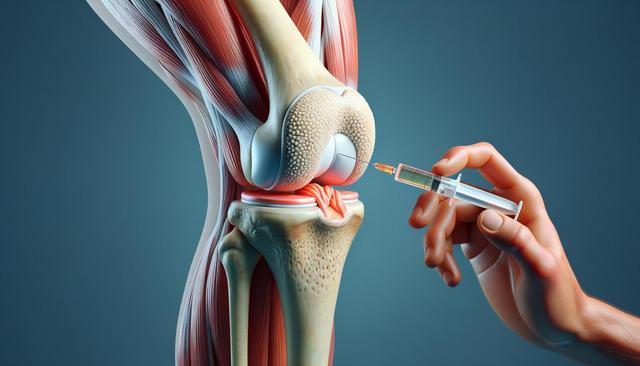Understanding How Knee Gel Injections Help Relieve Joint Pain
Knee gel injections, also known as viscosupplementation, are designed to provide relief for individuals experiencing chronic knee pain, commonly due to osteoarthritis. These injections use a gel-like substance, typically containing hyaluronic acid, which mimics the natural fluid found in healthy joints. Over time, the natural lubrication in the knees can diminish, leading to increased friction, stiffness, and pain during movement. By restoring this lubrication, the gel injections aim to reduce discomfort and improve joint function.
One of the key aspects of understanding how knee gel injections help relieve joint pain is recognizing their role in improving mobility. The injected gel acts as a cushion and lubricant between bones, which can decrease the sensation of grinding or stiffness. For many patients, this results in a noticeable improvement in daily activities such as walking, climbing stairs, or standing for extended periods. Although not a cure, this form of joint lubrication therapy for arthritis can significantly enhance quality of life.
What to Expect During a Viscosupplementation Procedure
For those unfamiliar with the process, it’s natural to have questions about what to expect during a viscosupplementation procedure. The treatment is typically performed in an outpatient setting and doesn’t require anesthesia. A healthcare provider will clean the area around the knee, possibly use a local anesthetic, and then inject the gel directly into the joint space using a fine needle.
Depending on the specific product and patient needs, the procedure might involve a single injection or a series of injections spaced over several weeks. Patients are usually advised to avoid strenuous activity for a day or two post-treatment but can otherwise resume normal tasks shortly after. The full effects of the injection may take a few weeks to become noticeable, but many individuals begin to feel gradual relief within that time frame.
Who Is a Good Candidate for Gel Shots in the Knee?
Not everyone with knee pain is automatically a candidate for gel injections. Understanding who is a good candidate for gel shots in the knee depends on several factors, including the severity of the condition and prior treatment history. Generally, these injections are recommended for individuals with mild to moderate osteoarthritis who have not found sufficient relief from oral medications, physical therapy, or other non invasive options.
Good candidates typically share these characteristics:
- Persistent knee pain that limits daily activities
- Minimal relief from oral anti-inflammatory medications
- Ineligibility or unwillingness to undergo knee surgery
- No active infection or bleeding disorder in the joint area
Consulting with a medical professional can help determine if this treatment aligns with a patient’s condition and overall health goals.
Comparing Non Surgical Knee Pain Management Options
When managing chronic knee discomfort, many patients explore non surgical knee pain management options before considering more invasive treatments. Knee gel injections are just one of several possibilities available to those seeking pain relief without surgery. Other alternatives include physical therapy, weight management, bracing, and anti-inflammatory medications. Each approach comes with its own benefits and limitations, depending on the individual’s condition and lifestyle.
Knee gel injections stand out as an appealing choice for several reasons:
- They directly address joint lubrication
- They are minimally invasive with few side effects
- They offer longer-lasting relief than some oral therapies
Combining these injections with other non-surgical interventions, such as strength training and low-impact exercise, can often enhance the overall effectiveness of the treatment plan.
Advanced Knee Treatment Solutions for Long-Term Relief
As medical technology progresses, patients now have access to a range of advanced knee treatment solutions that go beyond traditional methods. While knee gel injections provide symptom relief, they also serve as a bridge for those who may eventually require more intensive interventions. These injections are part of a broader strategy aimed at preserving joint function and delaying or avoiding surgery.
In some cases, healthcare providers may recommend combining viscosupplementation with regenerative therapies, such as platelet-rich plasma (PRP) or stem cell treatments. Although these are still under study in many regions, they represent a growing interest in comprehensive joint care. For those managing arthritis or similar conditions, integrating gel injections into a broader regimen of care may offer sustained comfort and mobility over time.
Ultimately, choosing the right treatment depends on individual needs, medical history, and lifestyle preferences. Discussing the full range of options with a knowledgeable provider can help patients make informed decisions about their care.
Conclusion: Making Informed Choices for Knee Pain Relief
For individuals living with chronic knee discomfort, knee gel injections can serve as a meaningful component of a non-surgical treatment plan. By understanding how knee gel injections help relieve joint pain and what to expect during a viscosupplementation procedure, patients can approach their care with greater confidence. Knowing who is a good candidate for gel shots in the knee and exploring other non surgical knee pain management options enables a more personalized treatment strategy. As part of modern joint lubrication therapy for arthritis, these injections contribute to the expanding field of advanced knee treatment solutions, offering hope for improved mobility and a better quality of life without the need for surgery.




Leave a Reply